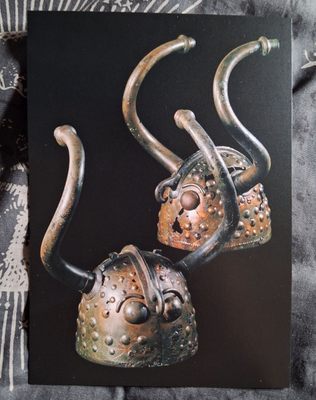About
Vikings are stereotypically depicted with horned helmets in popular culture, much to the chagrin of historians. Most likely, they never wore such headgear and the idea originated in the 19th century, largely influenced by the costume designs for Wagner’s Der Ring des Nibelungen.
If you visit the National Museum of Denmark in Copenhagen, however, you can find a pair of horned helmets just like the ones imaginary Vikings wear in popular depictions. But these helmets, known as the Viksø Helmets, are not from the Viking Age. They are from at least a thousand years before the Viking Age, which began around 800.
A workman at a peat bog extraction site in Brøns Mose, Viksø, found the helmets in 1942. Since then, the helmets have been dated to sometime between 857 and 907 B.C. during the Bronze Age. The helmets have horns similar to an aurochs, an extinct relative of modern cattle. The horns were likely a symbol of power and authority, and the way they were deposited in the bog suggests a possible ritual of votive offerings.
In addition to the prominent horns, the helmets are decorated with eyes and beaks resembling birds of prey, and archaeologists believe that they also sported a mane of horsehair and feathers back in the day. These symbols may have been used to worship the sun.
Related Tags
Community Contributors
Added By
Published
April 24, 2024





































